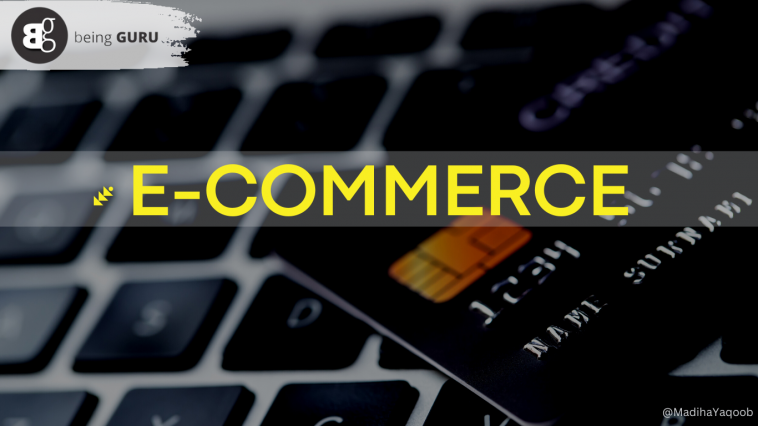How to start an eCommerce bussiness
Are you looking how to start an eCommerce bussiness?

It is everyone’s dreams to have an eCommerce bussiness because there is a lot of money in it and we don’t even need to open a physical shop.
There is no doubt that eCommerce bussiness is a profitable bussiness but before we stsrt it we need to know its whole process that how to start eCommerce bussines
1.How to start an eCommerce bussiness from scratch in 5 steps?
Dreaming about turning your million-dollar idea into an ecommerce store? You may already be thinking about what type of products you want to sell, who your audience will be, and how you’ll attract customers.
It can be a lot to consider, so let’s look at five basic areas:
- esearching and validating your business idea so you know what’s likely to sell
- Procuring products or sourcing them from reliable suppliers
- Choosing selling channels to connect with customers
- Listing products and optimizing content to drive sales
- Marketing and promoting products to attract customers
Step1:Research and validate your business idea
What problem or challenge are you seeking to solve? Who’s going to be most excited about the solution you come up with?
Some ideas—however innovative—can fail if they don’t have customers to support them. As you zero in on product ideas here are some prompts to help you make decisions
- What are the common problems people face in your industry?
- Why are they facing these problems?
- What products or improved features can you offer to solve these problems?
- What trends have you noticed in the world that you can capitalize on?
- What activities do you enjoy? What products would improve those activities?
Answering these questions can bring you closer to findind product people want to buy
Find a way to improve existing products
Read customer reviews of similar products to find out where your competitors fall short. Tally the issues and look for patterns. Next, research how much it might cost to solve the issue
For example, glassware comes in many designs, but families may avoid purchasing glasses out of fear their children will break them. So if you create a line of attractive, shatterproof glasses, it could be lucrative..
Talk to potential customers about their frustrations
What comments or complaints do you hear from friends or family about the products they use? Reach out to a small group of people to understand if they face the problem you’re trying to solve, and find out how they currently deal with this challenge.
Here’s one approach:
- Offer to buy 5 to 10 people a cup of coffee in exchange for 30 minutes of their time.
- Use your meeting to talk about the challenge and see if the pain point is something they would pay money to solve, or if it doesn’t bother them much.
- Avoid bringing up the product you have in mind, as this may influence the answers you get. Instead, focus on how they feel about the challenge, how they currently deal with it, and whether they would pay to solve the problem. If so, how much would they be willing to pay?
Asking these questions can help you figProduct features and benefits
Price ranges
Customer reviewsure out if there might be an audience for the product.
Spot opportunities with competitor research
Before you open your virtual doors, it’s a good idea to check out the competition. A simple approach to competitor research can involve browsing results in Amazon search for product categories that interest you. Pay attention to the following:
- Product features and benefits
- Price ranges
- Customer reviews
The more time you spend validating the product, the better your chances of succeeding in ecommerce.
Step2:Source products
Once you’ve figured out what you will sell and who the products will serve, the next step is to find the right source for the products.
Good products will help your new online business thrive. The key is not only choosing the right product, but also the right source for products. Here are a few options for sourcing ecommerce products.
Resell existing products
Reselling involves procuring products and reselling them to the end customer for a profit. Online directories and listings can help you find suppliers for products. You can contact vendors, order products, and ship them to your business or storage location. Then, ship them out to customers once the products sell. Finding and building relationships with suppliers can lead to more affordable procurement, and it can help secure a steady supply chain for your business in the future.
Create or build products
In contrast to other forms of procurement, making products can give you greater control over quality and design. But this method may also be harder to scale up. Some sellers prefer to create small batches of handmade products to keep operations manageable, then price products at a premium.
If this is the route for you, explore artisanal or custom ecommerce selling options like Amazone Handmade.
Work with a manufacturer
Partnering with a manufacturer can take time and resources, but the investment might be worth it if you want to build your own brand. The right manufacturer can build prototypes to your specifications.
Locate a few manufacturers and ask for samples. Then narrow it down to two or three and order a small batch to test the manufacturer’s speed, quality, and communication.
Step 3: Choose an online selling channel
If you’re new to ecommerce, you may want to start small and scale up. Selling on your own website is an option if you have the time, resources, and skills to customize a website, create a seamless online experience, and compete on the internet to get customers to your virtual doorstep.
Other options include starting out on an established ecommerce website like Amazon.com, or selling through social media sites like Facebook, Instagram, or Pinterest. Let’s explore the details of a few different routes.
Sell on an existing ecommerce website
Selling websites with established traffic can help you connect with customers, expanding your visibility and reach. This strategy also gives you a chance to learn about what works for other sellers, get reviews, and generate revenue before investing in your own website.
Try social selling
Social selling is a way for entrepreneurs to share about products and allow customers to buy during a live show. Customers can see the products, ask questions, and get personalized product recommendations in real-time. Social selling can take place on social media or live-streaming destinations like Amazon live, an interactive way to build customer relationships
Create an Amazon storefront
The Amazon stores builder allows you to customize an immersive, multi-media experience to help customers connect with your brand. In addition to getting a custom URL, you can design a homepage and additional content to let customers explore your brand’s catalog.
Whichever route you choose, keep in mind you can start with one sales channel and add others as you scale. You can also drop a channel if it isn’t serving your needs. One of the perks of operating an ecommerce shop is that you can use a mix of channels.
Step 4: List and optimize products
Once you’ve decided where you’re going to sell your products, it’s time to get your business up and running. Listing products online is a way to help customers around the world connect with what you’re offering. You can manually list products or use systems with templates and spreadsheets to manage your inventory in bulk.
The challenge? Helping products stand out from the competition in a sea of offerings. Here are some tips for crafting competitive product listings:
- Write descriptively and include critical information to help customers make informed decisions.
- Make sure the listing is complete and accurate in order to minimize returns and avoid negative customer feedback.
Step 5: Market and promote your ecommerce shop
There’s a wide variety of ways to get products in front of the right eyes, win over customers, and convert them into buyers. Running marketing and promotional campaigns can help you reach a broader audience based on the selling channels you use.
Here’s a brief overview of several options:
- Use targeted cost-per-click (CPC) ads like Sponsored Brand (if you’re part of an enrolled brand), to spread the word about specific products.
- Offer special deals, like seasonal sales, lightning deals, and digital coupons
- Try social media marketing to tap into active online communities or engage social media influencers.
- Upsell or cross-sell products to show customers an upgrade or an alternative based on the product they viewed.
People also ask !!
Step1 :Research and validate your bussiness idea.
Step2 :Source products
Step3: Choose an online selling products
How do I create an online eCommerce?
Step 1: Choose your content management system
Step2: Create an account
Step3: Create product listings
How to learn e-commerce?
Learning Ecommerce In 6 Simple Steps
- Step 1: Grasping Ecommerce Essentials. …
- Step 2: Undertake Market Research. …
- Step 3: Setting Up Your Ecommerce Store. …
- Step 4: E-commerce SEO and Digital Marketing. …
- Step 5: Managing E-commerce Operations. …
- Step 6: Analytics and Optimization.
Is e-commerce easy?
Understanding E-commerce
Providing goods and services isn’t as easy as it may seem. It requires a lot of research about the products and services you wish to sell, the market, audience, competition, as well as expected business costs.
Can I start e-commerce?
To start an e-commerce business, you can create a new website or register as a seller on an existing e-commerce platform. Most new entrepreneurs find it advantageous to begin as sellers on established platforms.


